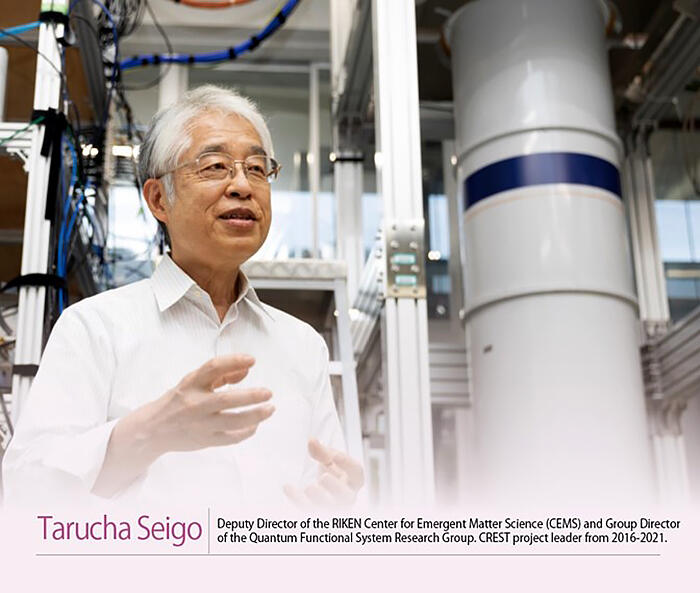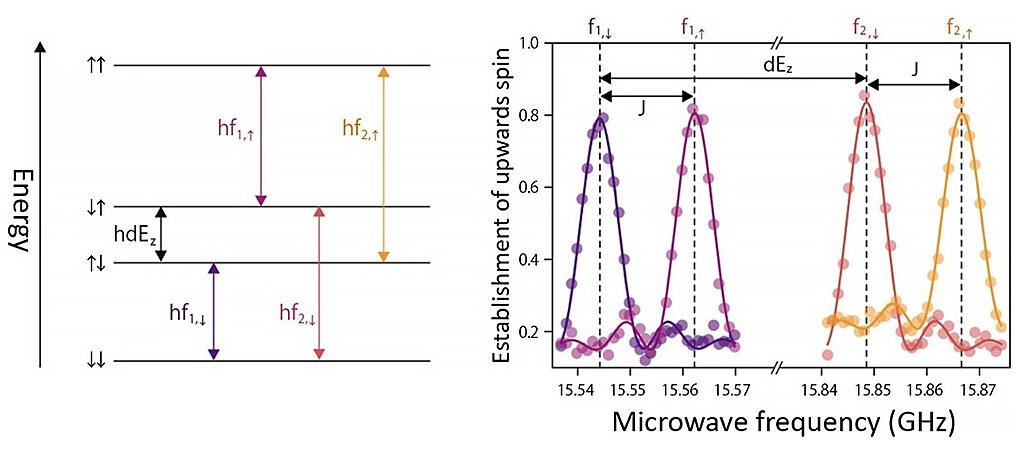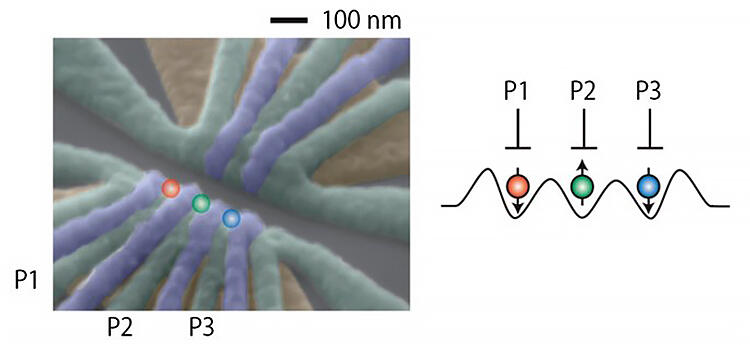As quantum computers are prone to errors during measurement and computation, how to deal with this problem is a major challenge. In order to address this issue, Seigo Tarucha, Director of the RIKEN Quantum Functional System Research Group, was the first in the world to succeed in the universal manipulation of the spin of two electrons confined in a silicon quantum dot with a high level of precision that will enable correction of errors. Using semiconductor technology that has been cultivated over the years, this research has paved the way for the realization of a semiconductor quantum computer.

From equipment failure to unexpected results. Fabrication of the world's first "artificial atom"
While superconducting circuits and ion trapping systems have been leading the way in the development of quantum computers, the semiconductor method is an attempt to develop a highly-integrated quantum computer by employing semiconductor technology, which is used in logic elements and memory in today's computers. In 1996, RIKEN Quantum Functional System Research Group Director Seigo Tarucha, who led the CREST project on "basic technological research on spin-based quantum computation," was the first in the world to fabricate microscopic quantum dots with disk-shaped rotational symmetry, and has led research on semiconductor spin quantum computers with this a starting point.
Dr. Tarucha, who has been studying the optical properties of semiconductors since he was a student, conducted research at the Nippon Telegraph and Telephone Public Corporation (now NTT) Musashino R&D Center on optical waveguides, which are key components for optical communications, and two-dimensional semiconductor lasers, also known as quantum well lasers. Later, he focused on the fact that even a single electron has wave properties, and began research on quantum dots, which are the smallest unit of information devices. He explains that "an electron has a spin, which is a magnetic property. There are two possible states, upward and downward, and the semiconductor spin quantum dot uses these upward and downward states as the '0' and '1' units of information."
Using quantum well technology cultivated in the development of semiconductor lasers to confine electrons in a thin film layer, Dr. Tarucha was the first person in the world to fabricate a semiconductor spin quantum dot with the same structure as an atom (an artificial atom). He recalls that "I had actually gone to the Delft University of Technology in the Netherlands to pursue entirely different research, but the plans were scrapped when there was an equipment malfunction. Since I had spare time as a result, I tested out an idea I had been secretly cooking up, and discovered unexpected properties that led to the birth of artificial atoms."
Dr. Tarucha also successfully developed an artificial molecule by coupling two quantum dots. At that time, many theoretical proposals on quantum computers were being made in Japan and overseas, and Dr. Tarucha thought that it might be possible to develop a quantum computer using artificial atoms and artificial molecules. In order to do so, the ability to control, manipulate, and measure the number of electrons in a quantum dot and their spin direction perfectly and with a high degree of precision is essential. He relates that "it is a tough challenge, but I thought we might be able to create a highly integrated, high-speed quantum computer by utilizing the semiconductor technology we are already familiar with, so I continued basic experiments on semiconductor spin quantum dots."
Quantum gate computers are based on logic gates formed by two connected quantum dots that perform calculations. Following the manipulation of an individual artificial atom, Dr. Tarucha connected pairs of atoms to create double qubits, and then explored methods for manipulating the double qubits with high precision. The biggest problem with semiconductor systems is that they are affected by factors such as impurities in the semiconductor material and temperature, which results in extremely short periods of quantum coherence during which quantum information can be retained, and errors frequently occur during operation or measurement. Initially, Dr. Tarucha used gallium arsenide (GaAs), which he was used to using for his semiconductor laser research, as the semiconductor substrate material, but he switched to silicon semiconductors as it was impossible to ignore the influence of GaAs' nuclear spin.
Accuracy rate of over 99% achieved ― 100 million bits on one chip in the future
At CREST, Dr. Tarucha began by investigating various silicon materials, and ultimately selected high purity crystals of a silicon isotope with no nuclear spin (28Si) to use for the substrate. Then, quantum dots were fabricated by applying positive voltage from an aluminum microscopic gate electrode to a silicon quantum well sandwiched between silicon-germanium (SiGe) in order to laterally confine the electrons and to control and manipulate the electron spins. This method also reduced the magnetic field noise and extended the quantum coherence period to the microsecond level.
For the correction of errors that occur during operation and measurement, improving the accuracy of universal operation, which manipulates the 1 and 2 qubits that are the basis of a logical gate, resulted in accuracy of 99% or better in all processes, including readout and initialization. This was the moment in which the necessary condition of "fault tolerance threshold" for universal operation was met. (Fig. 1) According to Dr. Tarucha, "In addition to demonstrating that error correction is possible for silicon quantum dots with a high degree of precision, we also demonstrated that highly precise quantum calculations can be performed using two qubits. These results show that a fault-tolerant silicon quantum computer is achievable."
Fig. 1: Universal two-qubit operation via the rotation of a single qubit

There is a difference in energy (hdEz) between the dots due to micro-magnet, in which the combination of ↑↓ (up-down) spins has less energy than the combination of ↓↑ (down-up) spins. In addition, these anti-parallel spin states have less energy than the parallel spin states of ↑↑ and ↓↓ by half the spin exchange energy (J/2). The graph on the right shows the result of manipulation to control rotation using electron spin resonance. Spin rotation occurs at frequencies that correspond to resonance conditions for the four different transitions (double arrows) in the graph on the left, and a peak of the upward spin probability was observed.
Meanwhile, Dr. Tarucha's group also realized a new quantum technology with the first triple qubit in a silicon-based system. They are developing a method to control quantum entanglement, which is a correlation phenomenon appearing as two or more quantum states, using this triple qubit. (Fig. 2) In addition, Dr. Tarucha and his team have successfully developed and demonstrated fundamental technologies essential for semiconductor quantum computers, such as the principle of "quantum teleportation," in which quantum entanglement is generated between non-adjacent quantum dots, and the quantum entanglement information that was entered is then transferred to other quantum dots.
Fig. 2: Electron micrograph image of a triple qubit

As for the future prospects, Dr. Tarucha stated that "because silicon quantum computers are compatible with existing silicon integrated circuit technology, the ability to develop a large-scale quantum computer in the future with 100 million bits integrated on a single chip is not a mere dream. Going forward, we aim to confirm operation on a scale of tens of qubits and would like to deepen our research in collaboration with semiconductor manufacturers and other stakeholders." Japan has established itself as a global frontrunner in semiconductor microfabrication technology. Leveraging these foundations, the country is expected to lead the world in the development of silicon quantum computers.
(Text: Shinji Moribe, photo: Hideki Ishihara)




